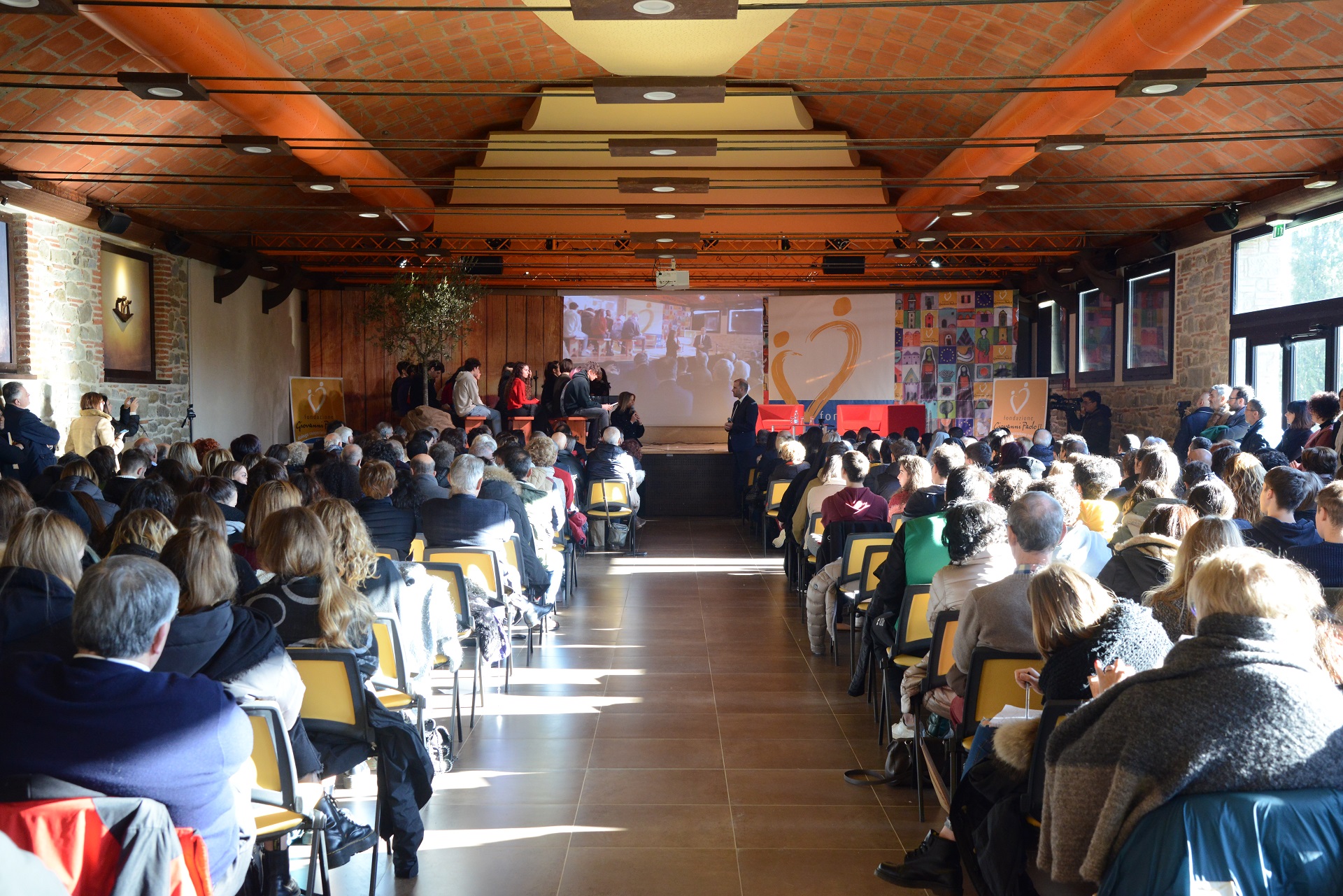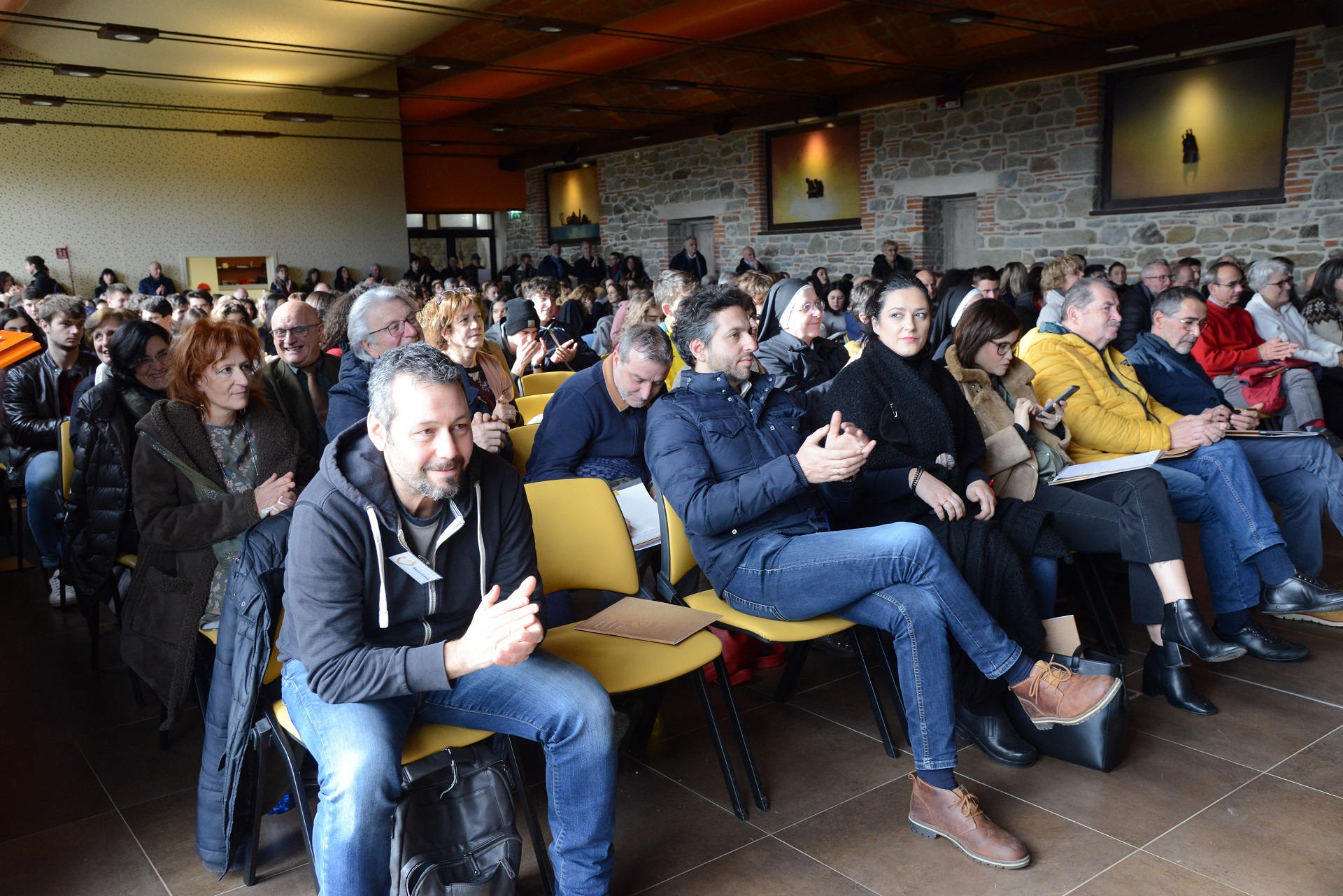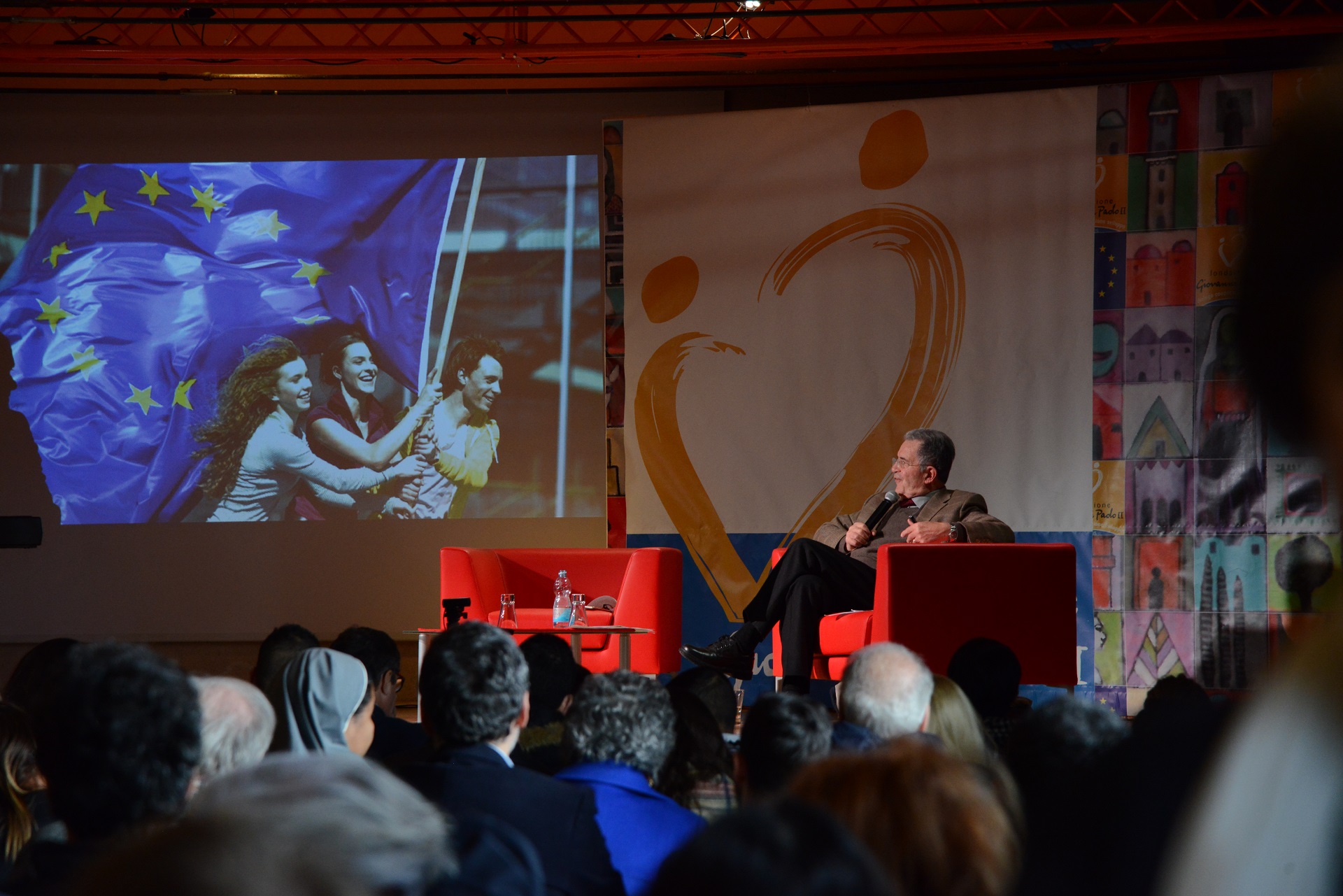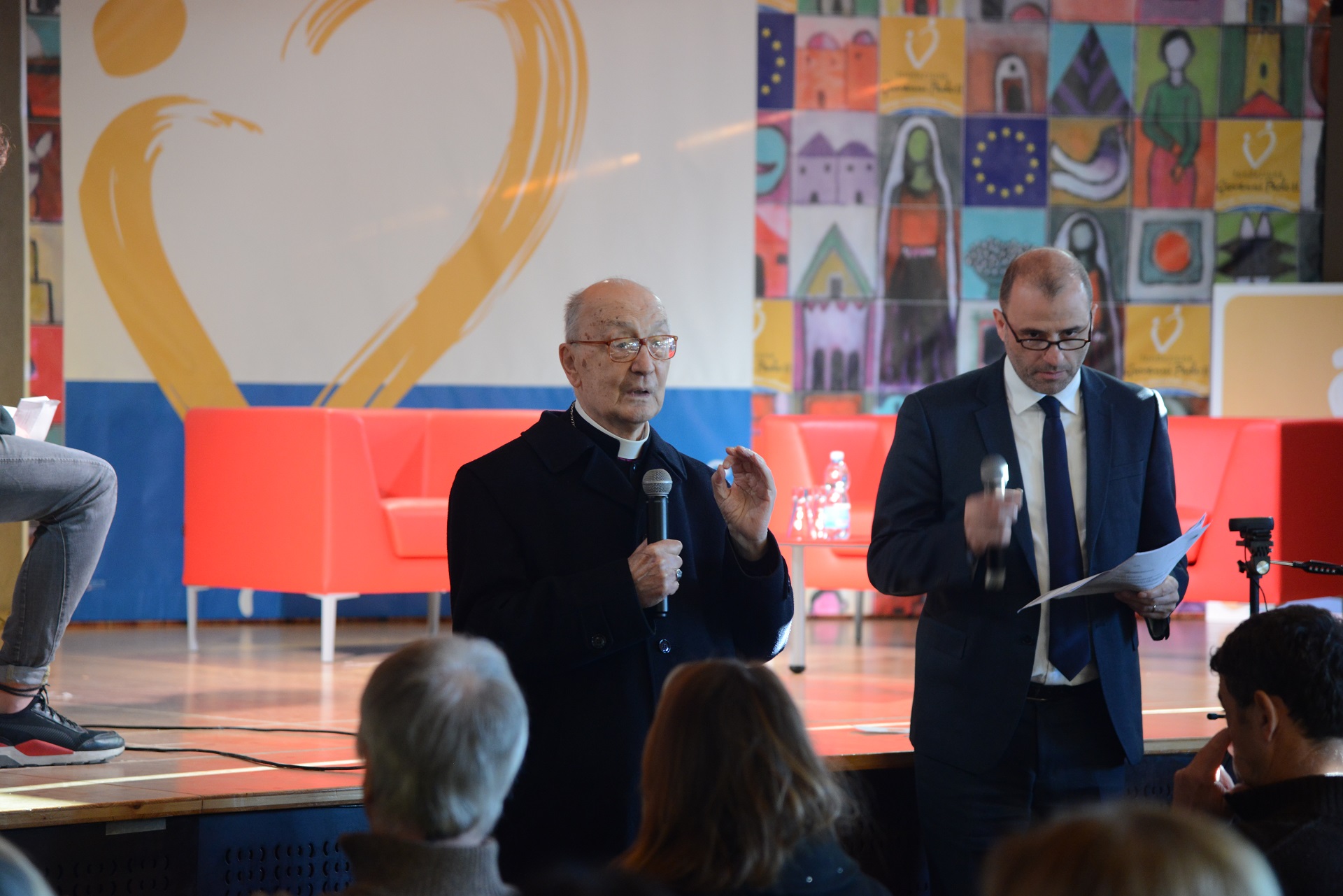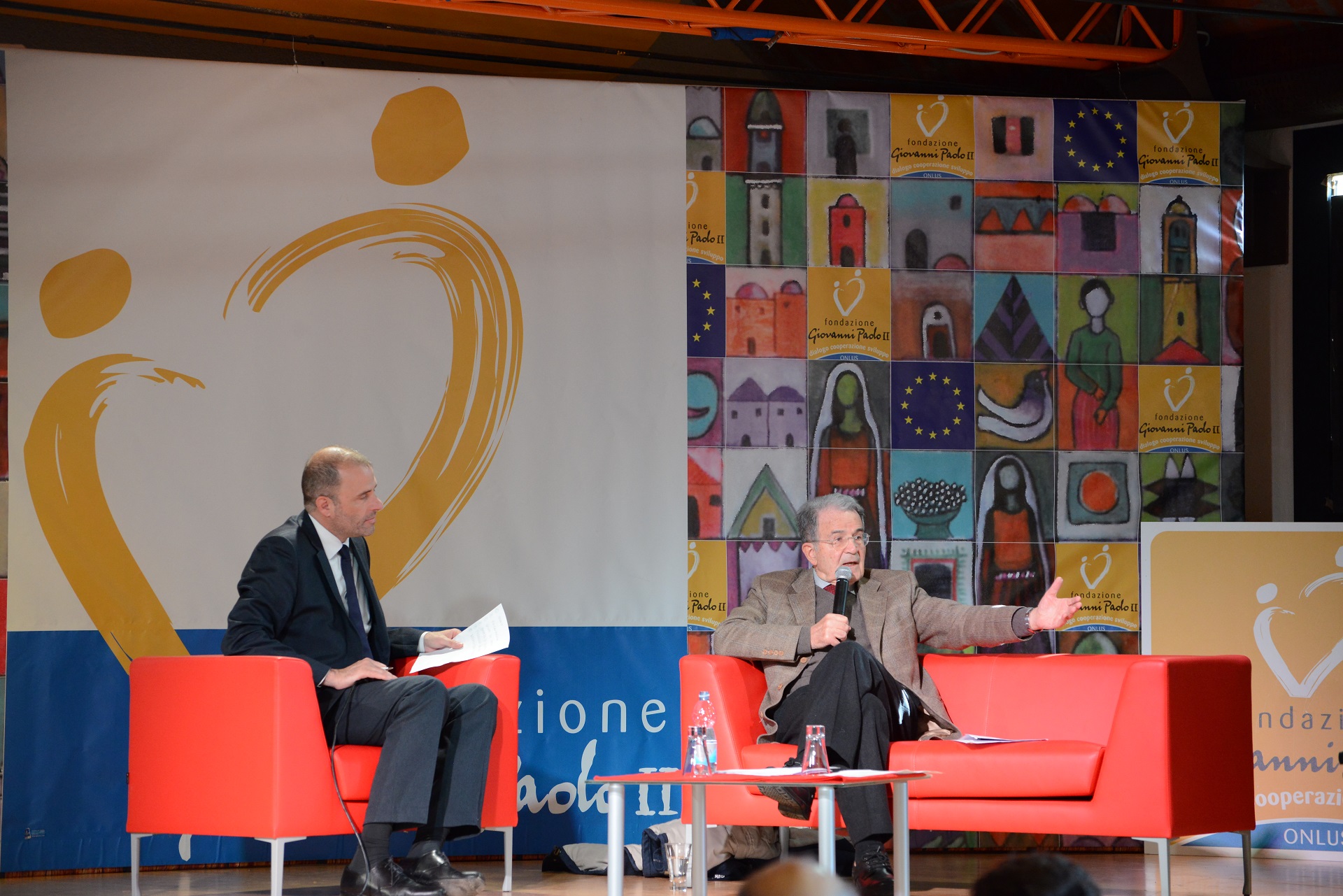
«Very real sign of God’s goodness» Paul VI and the Ephpheta Institute in the light of Vatican II
di Riccardo Burigana
On December 4, 1963, in his closing address to the Second Session of the Second Vatican Council, Paul VI announced to the Council Fathers his intention to make a pilgrimage to the Holy Land: Paul VI wanted to invite everyone, not only Catholics, to rethink the centrality of the life of Jesus Christ and the birth of the Christian experience for the witness of the Word of God in the world. The pilgrimage – this is how the pope wanted his journey to be defined – assumed a special meaning because it was realized when the Catholic Church, with the celebration of the Second Vatican Council, had promoted a process of aggiornamento, opening new perspectives of dialogue with other Christians, with other religions and with the world.
Paul VI’s pilgrimage played a fundamental role in the life of the Second Vatican Council, especially after the meeting between Paul VI and Athenagoras, the Ecumenical Patriarch of Constantinople, whose pictures, rather than the words commenting the meeting, showed the world how much the visible unity of the Church was considered a priority for the pope, although the decree Unitatis redintegratio on the Catholic principles of ecumenism had to be promulgated and it was unclear the destiny of the document on the Jews in the Council.
Paul VI’s pilgrimage to the Holy Land had not only an ecumenical dimension but it can be considered programmatic of the whole pontificate for the themes addressed and for the projects started. During his journey Paul VI had noticed the presence of deaf-mute children without assistance, and he asked their condition, wondering what he, and the Catholic Church, could do to give them hope for today and tomorrow. Paul VI took the decision to create an “Institute”, an educational structure, where deaf-mute children could find training that would allow them to express themselves so that they can live in the world.
The project of creation of the Institute, which was particularly close to the pope’s heart for the relationship that had been created with the Holy Land, wanted to be also a sign of the reception of Vatican II, where it had been discussed how the Church could bear witness to her vocation to be poor for the poor people. Despite the pope’s intentions, it was absolutely not easy, for many reasons, to achieve the realization of the project that included an educational program which had to be planned.
Paul VI wanted that the name of the school refers to a passage in the Gospel according to Mark (7, 32-35): «Some people brought to him a man who was deaf and could hardly talk, and they begged Jesus to place his hand on him. After he took him aside, away from the crowd, Jesus put his fingers into the man’s ears. Then he spit and touched the man’s tongue. He looked up to heaven and with a deep sigh said to him, “Ephphatha!” (which means “Be opened!”). At this, the man’s ears were opened, his tongue was loosened and he began to speak plainly.» The choice of Paul VI was rooted in the rediscovery of the Word of God for the daily life of the Church, which had been discussed in Vatican II, as a fundamental element of the process of aggiornamento of the Church, so much so that «the sacred synod encourages the sons of the Church and Biblical scholars to continue energetically, following the mind of the Church, with the work they have so well begun, with a constant renewal of vigor.» (Dei Verbum, n. 23).
After seven years of Paul VI’s pilgrimage, on June 30, 1971, cardinal Ma»ximilian Furstemberg, in the name of Paul VI, who had wanted the Institute in Bethlehem, inaugurated the school, whose management was entrusted to the Congregation of the Sisters Teachers of Saint Dorothy, Daughters of the Sacred Hearts from Vicenza (Italy), already present in the Holy Land since 1927.
The Institute was a gift of Pope Paul VI for the Church and for the world and it a perennial source of hope for all men and women of good will: « Wherever children are accepted, loved, cared for and protected, the family is healthy, society is more healthy and the world is more human. Here we can think of the work carried out by the Ephpheta Paul VI institute for hearing and speech impaired Palestinian children: it is a very real sign of God’s goodness. It is a clear sign that society is healthier» (pope Francis, Homily, Bethlehem, 25 May 2014).
TRADUZIONE
«Segno concretissimo della bontà di Dio» Paolo VI e l’Istituto Effeta alla luce del Vaticano II
Il 4 dicembre 1963, nel discorso conclusivo della Seconda Sessione del Concilio Vaticano II, Paolo VI annunciava ai Padri conciliari la sua intenzione di compiere un pellegrinaggio in Terra Santa: Paolo VI voleva invitare tutti, non solo i cattolici, a ripensare alla centralità della vita di Gesù Cristo e alla nascita dell’esperienza cristiana per la testimonianza della Parola di Dio nel mondo. Il pellegrinaggio – così il Papa volle definire il suo viaggio – assunse un significato speciale perché realizzato quando la Chiesa cattolica, con la celebrazione del Concilio Vaticano II, aveva promosso un processo di aggiornamento, aprendo nuove prospettive di dialogo con altri cristiani, con altre religioni e con il mondo.
Il pellegrinaggio di Paolo VI ebbe un ruolo fondamentale nella vita del Concilio Vaticano II, soprattutto dopo l’incontro tra Paolo VI e Atenagora, il Patriarca ecumenico di Costantinopoli, le cui immagini, più che le parole a commento dell’incontro, mostrarono al mondo quanto la visibile unità della Chiesa fosse una priorità per il Papa, anche se il decreto Unitatis redintegratio sui principi cattolici dell’ecumenismo doveva ancora essere promulgato e non era chiaro il destino del documento sugli ebrei nel Concilio.
Il pellegrinaggio di Paolo VI in Terra Santa ebbe non solo una dimensione ecumenica ma può considerarsi programmatico di tutto il pontificato per i temi affrontati e per i progetti avviati. Durante il suo viaggio Paolo VI aveva notato la presenza di bambini sordomuti privi di assistenza e si era informato sulla loro condizione, chiedendosi cosa lui, e la Chiesa cattolica, potessero fare per dare loro speranza nell’oggi e nel domani. Paolo VI prese la decisione di creare un “Istituto”, una struttura educativa, dove i bambini sordomuti potessero trovare una formazione che permettesse loro di esprimersi e di vivere nel mondo.
Il progetto di creazione dell’Istituto, particolarmente caro al Papa per il rapporto che si era instaurato con la Terra Santa, voleva essere anche un segno dell’accoglienza del Vaticano II, dove si era discusso di come la Chiesa potesse testimoniare la sua vocazione a essere povera per i poveri. Nonostante le intenzioni del Papa, non fu assolutamente facile, per molte ragioni, arrivare alla realizzazione del progetto che prevedeva un programma educativo da pianificare.
Paolo VI volle che il nome della scuola si riferisse a un passo del Vangelo secondo Marco (7,32-35): «Alcuni gli condussero un uomo sordo e parlava appena, e pregarono Gesù di porre la sua mano su di lui. Dopo averlo preso in disparte, lontano dalla folla, Gesù mise le dita nelle orecchie dell’uomo. Poi sputò e toccò la lingua dell’uomo. Alzò gli occhi al cielo e con un profondo sospiro gli disse: «Effatà!». (che significa “Sii aperto!”). A questo gli si aprirono le orecchie, gli si sciolse la lingua e cominciò a parlare chiaro». La scelta di Paolo VI si radicava nella riscoperta della Parola di Dio per la vita quotidiana della Chiesa, di cui si era discusso nel Vaticano II, come elemento fondamentale del processo di aggiornamento della Chiesa, così che «il sacro sinodo incoraggia i figli della Chiesa e i biblisti a proseguire energicamente, seguendo il pensiero della Chiesa, il lavoro che hanno così bene iniziato, con un costante rinnovamento di vigore». (Dei Verbum, n. 23).
Dopo sette anni di pellegrinaggio di Paolo VI, il 30 giugno 1971, il cardinale Maximilian Furstemberg, a nome di Paolo VI, che aveva voluto l’Istituto a Betlemme, inaugurò la scuola, la cui gestione fu affidata alla Congregazione delle Suore Maestre di Santa Dorotea, Figlie dei Sacri Cuori di Vicenza (Italia), già presenti in Terra Santa dal 1927.
L’Istituto è stato un dono di Papa Paolo VI per la Chiesa e per il mondo ed è fonte perenne di speranza per tutti gli uomini e le donne di buona volontà: «Ovunque i figli sono accolti, amati, curati e protetti, la famiglia è sana, la società è più sana e il mondo è più umano. Qui possiamo pensare al lavoro svolto dall’istituto Ephheta Paolo VI per i bambini palestinesi con problemi di udito e di parola: è un segno molto reale della bontà di Dio. È un chiaro segno che la società è più sana» (Papa Francesco, Omelia, Betlemme, 25 maggio 2014).

